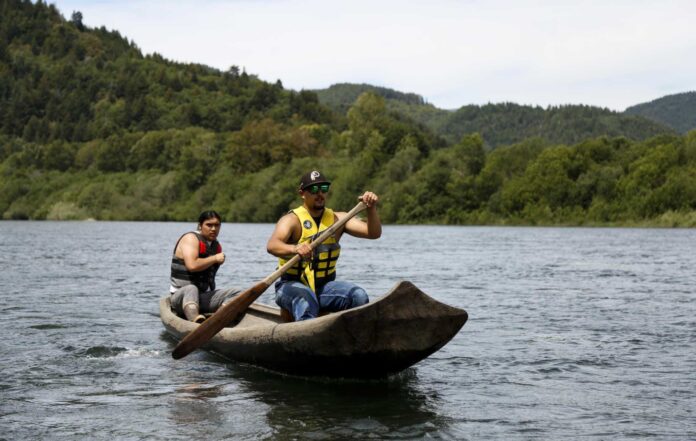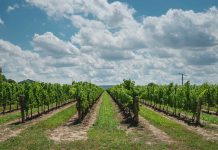Starting this month, California’s tourism bureau is trying something it’s never tried before: nudging travelers toward the state’s tribal lands, many of which haven’t historically hosted large numbers of sightseers, in hopes of benefiting from a largely untapped resource of rich cultural history.
A new promotional campaign called “Visit Native California” represents the bureau’s first effort to spotlight the cultural heritage of some of the 109 federally recognized tribes here and help them gain a foothold in the state’s immense tourism market. It comes at a time when several tribes and Indigenous communities are just beginning to build new tourism businesses.
“When I found out about (the campaign), I started crying because I’ve been waiting for something like this to happen here,” said Ashley Bowers, marketing lead for Yurok Country, the promotional arm of Northern California’s Yurok Tribe, of which she is a member. “This is huge.”
The idea came about organically from conversations between tourism bureaus and tribes around the state, coordinators say, and comes as California’s tourism industry tries to pull out of the economic hole left by the pandemic. International and business travel to the state is still well below 2019 levels and not expected to rebound until 2024.
Midwestern states have been promoting visitation at Native American reservations for years, and British Columbia has been proactive about showcasing tours, restaurants and cultural exhibits on its native lands as well. But this is a new step for California.
“We think this is perfect timing. More and more tribes are developing visitor experiences,” said Visit California President and CEO Caroline Beteta. “This is a unique differentiator that you can’t experience anywhere else.”
The Yurok have about 7,000 members whose ancestral lands trace the Klamath River and span Humboldt and Del Norte counties. Last year, the tribe consulted with the California Department of Parks and Recreation in renaming an oceanside state park north of Eureka with a tribal term used to describe the land for centuries. Bowers called it “a huge step for native people in general.”
The tribe owns a small casino-hotel, RV parks and a visitor center. But recently it has expanded its approach to attract a newer type of tourist, Bowers said.
“I’ve seen the change in people,” she said. “They’re becoming more aware and they want to learn — they’re more interested in who we are.”
Last year, the tribe began offering tours on the Klamath in traditionally made 20-foot-long redwood canoes where guests learn about the Yurok’s creation stories and relationship to the land.
“It’s the first real ecotourism we’re doing here,” Bowers said.
Visit California and some of its tribal partners are announcing the new campaign on Wednesday at the site of a soon-to-be Indigenous cultural plaza under construction in downtown Palm Springs. Owned by the Agua Caliente Band of Cahuilla Indians, the plaza will open next year and include a museum and mineral spa.
The tribe, which has more than 500 members, has offered interpretive guided hikes on its ancestral lands for 20 years. But the prominence of a downtown venue in a city that drew more than 14 million visitors in 2019 will vault the tribe’s profile and clue travelers in to the broader shift on native lands in the state, according to Kate Anderson, the Agua Caliente tribe’s director of public relations.
“People just don’t yet think of California as a place where tribes are,” said Anderson, a member of Citizen Potawatomi Nation, a tribe located in Oklahoma. “We’re on the verge of becoming a major hub for Native American cultural tourism in Southern California.”
Bringing in visitors isn’t just an economic boon to tribes; it’s an opportunity to establish direct connections with people who may know little to nothing about the presence of Indigenous communities in California, said Agua Caliente Chairman Reid Milanovich.
“It’s important for each tribe to have their own voice and educate the public about who they are,” he said. “That way, when people come to visit our tribal lands they have a better understanding of our culture, our history, the fact that we’ve been there since the beginning, so they respect our traditions.”
Gregory Thomas is the Chronicle’s editor of lifestyle & outdoors. Email: gthomas@sfchronicle.com Twitter: @GregRThomas










